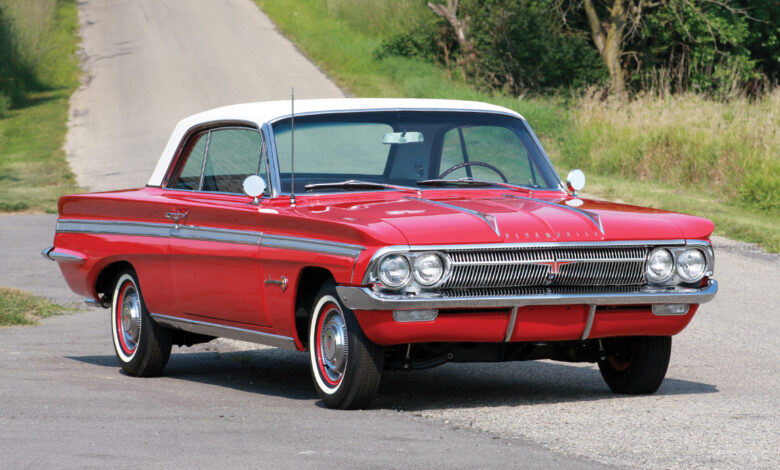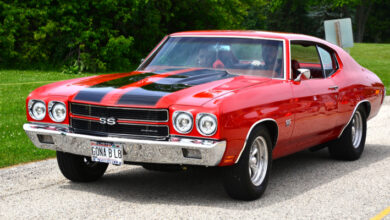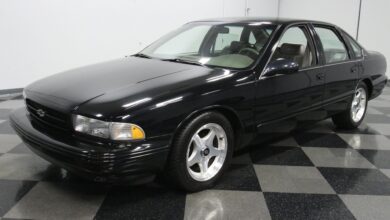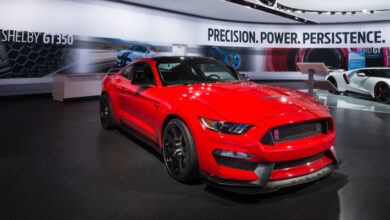Redefining the Legacy of the 1962 Oldsmobile Jetfire

Even though the American automaker is not around anymore, Oldsmobile was never afraid to push boundaries. Take the 1962 Oldsmobile Jetfire for example, which features a Garrett turbocharger from the factory. In some ways, this kind of pursuit for more power really lit the fuse for the upcoming muscle car era.
Turbochargers were not always as dependable and stable as they can be in modern times with proper engineering. In the early 60s, typical turbo issues included pre-ignition problems, detonation, and even inadequate oil pressure to feed the spool.
The Jetfire became the first turbo production passenger car ever to hit the streets. Alongside fellow GM automaker Chevrolet with their turbocharged Monza Spyder Corvair, the Americans unleashed turbos a decade before the Europeans.
Unfortunately, of the two American turbocharged wonders, the Jetfire suffered from complex engineering rendering it unreliable. In short, it was a pain in the ass to deal with.
After building only 9,617 Jetfires over a two-year window, Oldsmobile pulled the plug. There are fewer than 200 remaining by some estimates.
That is where opportunity knocks for the car collector or restoration specialist. Modern technology and tuning are sparking a lot of interest in the 1962 Oldsmobile Jetfire. For years, it was difficult to even find a shop willing to touch one.
Now you can find several specialists who are capable of turning the Jetfire into a formidable hardtop coupe from the early 60s. Some of the shortfalls you will need to address with a Jetfire turbo system involve oil pressure and dealing with excess heat.
Then there is Oldsmobile’s odd decision to use a special Turbo Rocket Fuel tank. No, it is not as cool or reliable as Peyton Manning’s laser rocket arm. The Turbo Rocket Fuel tank may have a clever name but it is prone to leaking.
This special tank holds distilled water, methanol, and an anti-corrosion inhibitor as a measure against turbocharger detonation. The system sends this elixir from the Turbo Rocket Fuel tank to the air-fuel mixture in an effort to cool it down. It kinda works but it can leak and it can fail randomly.
Good Effort, Poor Execution
By 1962, the hot rod community was growing so rapidly that manufacturers wanted to get one step ahead. If you could drive it off the lot and beat some legends of the streets, it will sell. Every diligent automaker knew this at the time and the rest came down to their bottom line.
Oldsmobile decided they wanted to squeeze more power from their 215 cubic-inch V8 engine. Without forced induction, this engine produced about 185 horsepower. Their goal was to achieve 1 hp per cubic-inch of engine displacement and in the end, they did.
With the turbocharger, the V8 now produced 215 hp, making it one of the best performing machines of the early 60s. The 1962 Oldsmobile Jetfire can go from 0 to 60 miles per hour in the 8-second range, on par with the Corvette. When the Jetfire operates as it should, it truly is a beast from its era.
Many owners loved driving the Jetfire but they frequently forgot to refill the Turbo Rocket Fuel tank. Sadly, this caused a severe lack of power or even engine failure over time. Now you see how the Jetfire acquired such a questionable reputation during its brief two-year run.
Operator error aside, the Jetfire still had the aforementioned design flaws. That is why there are so few Jetfire models in existence today. When the entire world thinks a car is a piece of junk, it usually gets crushed or converted into scrapyard parts.
Catching Jetfire
Finding a 1962 Oldsmobile Jetfire for sale is not an easy task. There are not a lot of them available. However, for the right price, some owners can quickly become motivated sellers if you want a Jetfire.
For the most part, the market holds steady around the $45,000 to $60,000 range. You will only find a handful of available Jetfire coupes available at any given time. Exceptional examples will begin hovering around the six-figure mark.
This is a rare enough car to keep your eyes on the auction blocks if you want a Jetfire. Mecum Auctions has a 1962 Oldsmobile Jetfire coming up right around the corner with no reserve. You will not have the stock turbo issues with that specific Jetfire.
In the modern automotive world, turbos are everywhere now. Taking a look back at the original turbocharged production car definitely shows how far technology advanced since the 60s. At the same time, it also makes you appreciate the pioneer Oldsmobile Jetfire, setting sail into uncharted waters.
With or without forced induction, driving classic cars from the 60s brings a nostalgic euphoria few things can replicate. From the smell of the fumes to the carbureted purr of classic American V8s, the Oldsmobile Jetfire nails it.
Imagine the fun you could have popping the hood of a classic Jetfire at both classic and modern car shows. Showing off the first turbo production car in automotive history will make any spoolhead’s eyes tear up with a little oil. After all, every turbo enthusiast can go on for days about boost leaks and oil drips.
That’s the beauty of machines. They can unite people from every generation because the appreciation for cars is a passion that transcends time. Thanks to cars such as the Jetfire, there is an entire planet full of ingenuity pushing the automotive industry into the future.
None of that matters when you are behind the wheel of an Olds Jetfire though. At that moment, it could be 1962 for all you care. You don’t have to travel to the past for any classic car to feel like a time machine.



